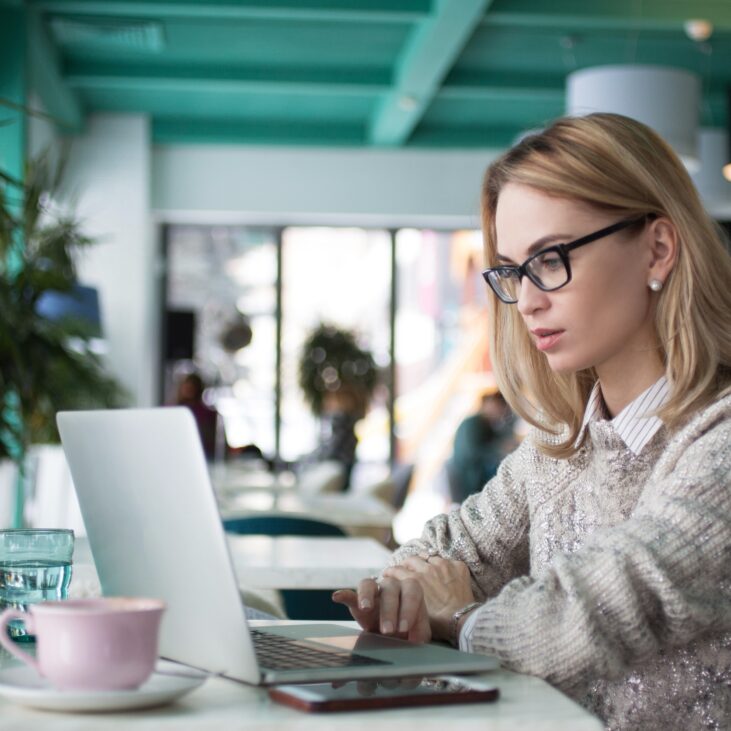Takeaways
- Inflation is the economic measure of rising prices of goods and services in an economy.
- Owning physical assets like real estate and commodities can hedge against inflation.
- Investors and financial media regularly track the Consumer Price Index (CPI).
- The U.S. Federal Reserve has a target interest rate of a 2% annual inflation rate.
- The Federal Reserve helps control inflation through monetary policy and tools.
Over the past several years, you may have noticed that your money isn’t getting you as far as it used to. This might have even led to sticker shock when you head to the grocery store, dine out, or buy new clothes. Your observations are an economy-wide phenomenon, and here’s why.
The U.S. economy has faced headwinds due to inflation or the rising price of goods or services. Inflation has left many people feeling like they are working harder but can’t keep up with the increased cost of seemingly everything. It can make many feel like they are on a perpetual treadmill of simply trying to “keep up” with the rising prices around them. Let’s look deeper into inflation and how it affects your finances.
What is Inflation?
Inflation is the economic term that describes the increase in prices of goods and services over time. The increase or decrease in inflation is typically measured annually. Inflation is a fundamental economic concept that affects the cost of borrowing, investing, and overall cost of living.
At its core, inflation represents the rate at which the general price level of goods and services in an economy rises over a period. Inflation erodes purchasing power, meaning that the same amount of money will buy you fewer goods and services over time. For example, a 12 oz. bottle of soda may have cost $1.00 in 1990, and in 2024, that same bottle costs $2.50. While inflation is a broad economic tool, it represents runaway costs that can be hard to contain.
Smart Tip:
3.5% – March Inflation Number
The CPI-U increased 0.4% in March (seasonally adjusted) and 3.5% over the last 12 months before reasonable adjustment [1].
How Inflation Works
There can be many causes of inflation. However, economic data points to the main culprit as a long-term period of easy monetary policy. Easy monetary policy is marked by a period where a country’s central bank establishes a very low interest rate for too long. In turn, this increases the money supply, and inflation begins to tick upward. When this happens, the value of the dollar depreciates and purchasing power declines.
Inflation is not necessarily a bad thing. However, if it rises too fast, it can seriously hinder the financial progress of everyday Americans by eroding savings, increasing the prices of daily goods, and squeezing business profits.
Two Main Types of Inflation
So, how does inflation happen? Well, inflation primarily occurs through two mechanisms: cost-push inflation and demand-pull inflation.
- Cost-push inflation arises when the costs of production increase, forcing businesses to raise prices to maintain profit margins. This can be due to higher costs for raw materials, increased wages, or more expensive overheads such as energy prices. An example of cost-push inflation could be seen when oil prices spike, leading to higher costs for transportation and manufacturing, which are then passed on to consumers in the form of higher prices. Another example would be a shortage of supply, which causes a spike in demand and prices, which flows through to the final product cost.
- Demand-pull inflation happens when demand for goods and services exceeds their supply. This can occur in a growing economy where consumers and businesses spend more. As companies struggle to keep up with increased demand, they raise prices. For instance, during economic recoveries, demand can outstrip supply as consumers begin spending again, causing prices to rise. Demand-pull inflation was on display during the COVID-19 pandemic when new car prices skyrocketed due to high demand and low inventory.
Additionally, inflation is influenced by monetary policy enacted by central banks. When a central bank, such as the Federal Reserve in the United States, decides to increase the money supply, it can lead to inflation if the new money outpaces economic growth. This is because more money chasing the same amount of goods and services can push prices higher.
Get Smart With Your Money
Fresh weekly articles delivered straight to your inbox.
Enter your name and email for free tips and tricks.

How is Inflation Measured?
The most cited measure of inflation is the Consumer Price Index (CPI), which the U.S. Bureau of Labor Statistics reports [2]. The CPI measures the average change over time in the prices paid by urban consumers for a market basket of consumer goods and services, ranging from food and clothing to cars and medical services. The CPI is vital for understanding how much inflation affects consumers and adjusting Social Security benefits and other significant numbers in the economy.
Another significant measure is the Producer Price Index (PPI), which reflects the prices suppliers charge businesses and other customers. The PPI can sometimes provide early signs of inflationary trends before they reach the consumer level, as it tracks cost changes in the production process.
High vs. Low Inflation
Inflation ebbs and flows based on the broader health of the economy, the federal funds rate, and other monetary policy tools the Federal Reserve can deploy. Depending on the inflation rate, your wallet can be impacted in different directions. High, medium, and low inflation all have different implications based on your financial situation.
Is High Inflation Bad?
While moderate inflation is a sign of a healthy, growing economy, high and low inflation can have adverse effects. High inflation, particularly hyperinflation, can be disastrous. It can erode savings, increase the cost of living rapidly, and create economic instability. High inflation levels can be good for borrowers because borrowers must pay a fixed principal amount back (plus interest) while the dollars erode in value to the lender. This could be beneficial if you have credit cards, personal loans, mortgages, and other loans.
Need more ideas? Learn More -> 26 Ways to Beat Inflation
What is Deflation?
Conversely, low inflation or deflation (falling prices of goods and services) might seem beneficial but can have negative implications. Deflation often leads to reduced consumer spending. If people expect prices to fall further, they delay purchases, leading to reduced economic activity, layoffs, and a slower economy. Deflation increases the purchasing power of dollars and thus helps lenders who are being paid back a fixed amount of principal and interest. If you own bonds or certificates of deposits, this scenario can be beneficial to your portfolio.
Learn More -> What is Compounding Interest?
What is a Good Inflation Number?
Economists and central banks aim for stable inflation, typically around 2%, which is believed to be conducive to a healthy economy [3]. This level encourages spending and investment but is not high enough to significantly erode purchasing power. As a consumer, you want to be able to predict inflation because it allows you to model the return on investments in stocks, bonds, mutual funds, ETFs, target date funds, and more.

Acorns Website
Acorns Investing App
Smart Money Rating: 5/5
Intro Offer: $20 Bonus Investment
Recommended For: Beginner Investors
Annual Fee: N/A
How to Protect Yourself Against Inflation
Because inflation can devalue your money over time, deploying investment strategies that protect your financial assets and keep your purchasing power constant is crucial. Here are several to consider:
- Invest in Inflation-Protected Securities: Instruments like Treasury Inflation-Protected Securities (TIPS) in the U.S. are designed to increase in value with inflation, as their principal is adjusted based on changes in the CPI. Investing in TIPS can be a great way to hedge against the rising costs of goods and services.
- Real Estate Investments: Property values and rental income typically increase with inflation, making real estate a practical hedge against inflation. If you don’t want to invest directly in real estate assets, you can explore investing in publicly traded REITs. Here are other ways to start investing in real estate.
- Stock Market Investments: The stock market tends to outperform inflation over time. Companies can often pass on higher costs to consumers, potentially leading to higher stock prices. You can invest in companies listed on the Nasdaq or NYSE or take a passive investing approach.
- Commodities: Investing in commodities like gold, which often is seen as a store of value, or oil, which tends to increase in price with inflation, can protect against inflation. Read more about investing in cryptocurrencies.
- Boost Your Income: Keeping your earnings ahead of inflation, through career advancement or side gigs, can also be a form of protection. Learning how to get the raise you deserve can accelerate your savings and keep you ahead of the inflation curve.
- Smart Budgeting: Regularly updating your budget to reflect changing prices and focusing on saving can mitigate the effects of inflation. Whether you use the 50/30/20 Budget or Envelope Method, budgeting can help you curb unnecessary spending and elucidate areas of improvement.

on Upwork’s Website
Upwork
Smart Money Rating: 5/5
Best For: Finding Remote and Freelance Work
Success: Freelancers earned $2.3B on Upwork in 2020
Smart Summary
Inflation is an ever-present aspect of economic life, influencing financial decisions, purchasing power, and investment returns. By understanding its mechanisms and implications, you can better protect yourself from its adverse effects and plan for a secure financial future. Effective proactive strategies like investing in assets that traditionally outpace inflation, such as real estate and stocks, can improve your personal finances and are smart money moves.
(1) U.S. Bureau of Labor Statistics. Consumer Price Index – March 2024. Last Accessed May 2, 2024.
(2) U.S. Bureau of Labor Statistics. Consumer Price Index. Last Accessed May 2, 2024.
(3) Federal Reserve. Why does the Federal Reserve aim for inflation of 2 percent over the longer run? Last Accessed May 2, 2024.










